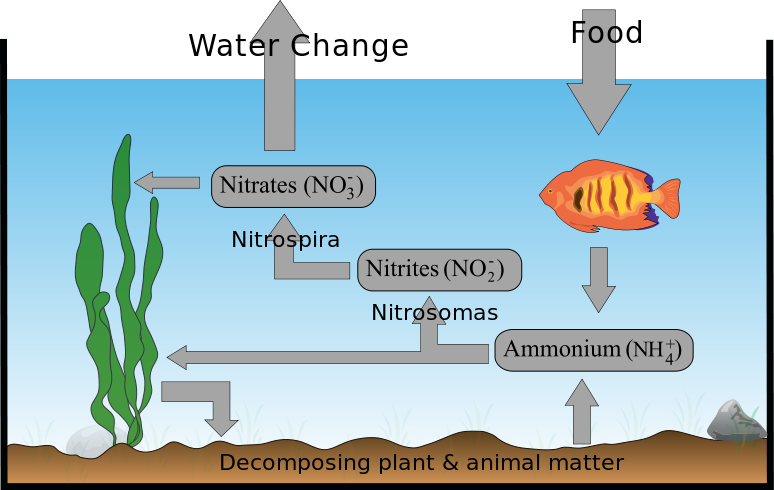You absolutely MUST cycle the water in the tank before putting your axolotl in there or it will get extremely physically stressed (from having to live with so many toxins) and may likely die. You should have your tank cycled already before getting your axolotl or else it will have nowhere safe to live. A cycled tank may be the most intimidating part of getting your axolotl tank setup, but once you get it figured out it’s not too hard. When you hear/read ‘cycling’, the cycle that is being referred to is the nitrogen cycle.
The cycle establishes a colony of beneficial bacteria that helps break down waste, and thus regulates the waters ammonia content. Remember, too much ammonia is toxic.
Overview; ammonia (which is released from axolotl food, feces, etc) is converted into nitrites, which are then converted into nitrates. Ammonia and nitrites are toxic. Nitrates are not toxic. That is the cycle.
Cycling a tank can take 6-8 weeks. The cycle is complete when ammonia and nitrites consistently test to zero parts per million, and nitrates are being produced regularly.

CYCLING Q & A
What is tank cycling?
Why can’t I just buy a tank, add water and the axolotl?
What do I need?
What is the goal of cycling?
-> 0 ppm Ammonia (NH3). 1 ppm = deadly.
-> 0 ppm Nitrite (NO2). 1 ppm = deadly
-> and 5-40 PPM Nitrate (NO3). Higher = deadly
What happens during the cycle?
-> Ammonia + good bacteria + time = Nitrate (toxin)
-> Nitrate + another good bacteria + time = Nitrite (toxin)
-> IT ALL TAKES TIME, so be patient.
